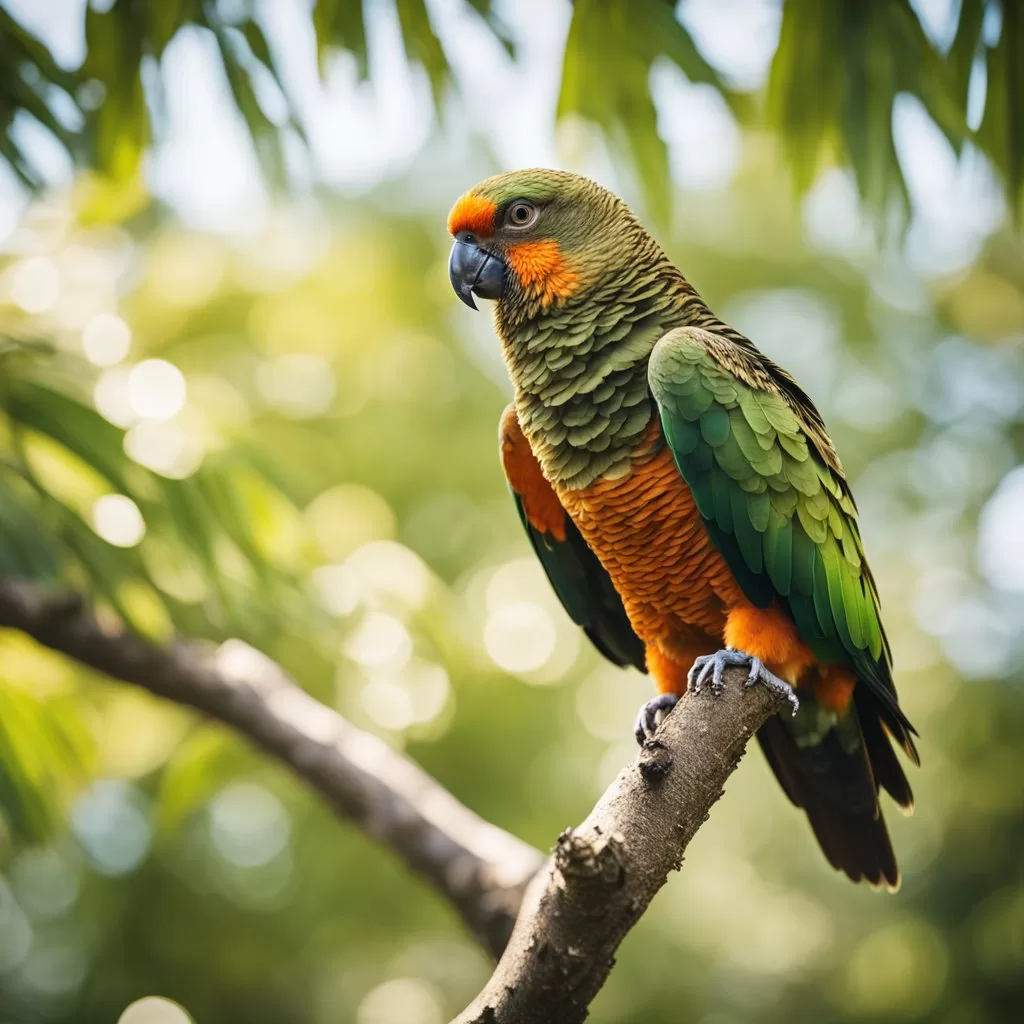Understanding Bird Intelligence
Bird intelligence encompasses various cognitive abilities, which vary across species. Factors such as brain size, neuron density, and social behaviors play crucial roles in how birds demonstrate their intelligence. The following sections highlight the definitions, brain characteristics, and neurobiological aspects that contribute to avian intelligence.
Defining Intelligence in Avian Species
Intelligence in birds is often defined by their problem-solving skills, ability to use tools, and complex social interactions. Species like corvids and parrots have exhibited advanced cognitive abilities that rival some mammals. The challenges they face in their environment often influence these skills. For instance, hunting, food storage, and social organization require impressive cognitive strategies, leading scientists to study their behaviors closely.
Brain Size and Cognitive Capacities
The size of a bird’s brain relative to its body size, known as the encephalization quotient (EQ), offers insight into its intelligence. Corvids, for example, possess a high EQ, indicating advanced cognitive functions. Additionally, brain structure plays a role; birds have a relatively high density of neurons in specific brain regions linked to problem-solving and memory. This neuroanatomical arrangement supports their ability to adapt and innovate in diverse environments.
The Neurobiology of Bird Brains
Bird brains differ significantly from mammalian brains in their organization. While birds lack a neocortex, they have a hyperpallium that serves a similar function in processing complex information. The density of neurons found in this area allows for sophisticated behaviors. Additionally, neurotransmitters like dopamine play vital roles in learning and motivation, influencing how birds interact with their surroundings and each other. Research continues to reveal the remarkable adaptations that enable bird intelligence to flourish.
The Corvidae Family: Masters of Problem-Solving

The Corvidae family, which includes ravens, crows, magpies, and jays, demonstrates remarkable cognitive abilities. These birds exhibit advanced problem-solving skills, complex social behaviors, and tool use, making them some of the most intelligent avian species.
Ravens and Crows: Tool Use and Social Intelligence
Ravens and crows are renowned for their extraordinary tool use. They have been observed bending twigs to extract insects from crevices or using stones to crack nuts. Such behaviors indicate not only ingenuity but also an understanding of material properties.
These birds are also social learners, capable of observing and mimicking the actions of others. In groups, they communicate effectively, sharing resources and warnings about predators. This social intelligence fosters collaboration, making them adept at problem-solving in dynamic environments.
Magpies and Jays: Memory and Self-Awareness
Magpies and jays display impressive memory capabilities, crucial for survival. They cache food in various locations, requiring an exceptional ability to remember where they have hidden their supplies. Studies show that they can recall these locations even months later, ensuring a food supply throughout seasons.
Self-awareness is another characteristic of these birds. Research indicates that magpies can recognize themselves in mirrors, a trait associated with higher cognitive functioning. This self-awareness aids in complex social interactions and enhances their adaptability in varying environments.
Parrot Cognition: Communication and Mimicry
Parrots exhibit impressive cognitive skills, particularly in communication and mimicry. Their ability to learn and replicate sounds, including human speech, highlights their advanced learning capabilities and social interactions.
The Social Lives and Learning Abilities of Parrots
Parrots, particularly species like the African Grey Parrot, are known for their rich social structures. They thrive in social groups, which fosters their learning abilities. Young parrots learn through observation, imitating their parents and peers.
Their social nature encourages innovative problem-solving and adaptability. For instance, macaws leverage interactions to refine their communication, demonstrating the significance of social learning in their cognitive development. Kea, a species from New Zealand, display similar characteristics, often engaging in playful activities that enhance their problem-solving skills.
Mimicry Skills and Use of Complex Vocalizations
Parrots are exceptional mimics, capable of producing a wide range of sounds. They can imitate human speech, environmental noises, and each other’s calls. Cockatoos, for example, are recognized for their ability to mimic specific phrases and sounds related to their environment.
This mimicry serves both communicative and social purposes. By mimicking the sounds of their surroundings or their human companions, parrots strengthen social bonds and clarify intentions. Their complex vocalizations can convey various emotional states, aiding in social cohesion among psittacines. This level of mimicry and vocal variability showcases their advanced cognitive abilities, setting them apart in the avian world.
Share this content:

Post Comment
You must be logged in to post a comment.